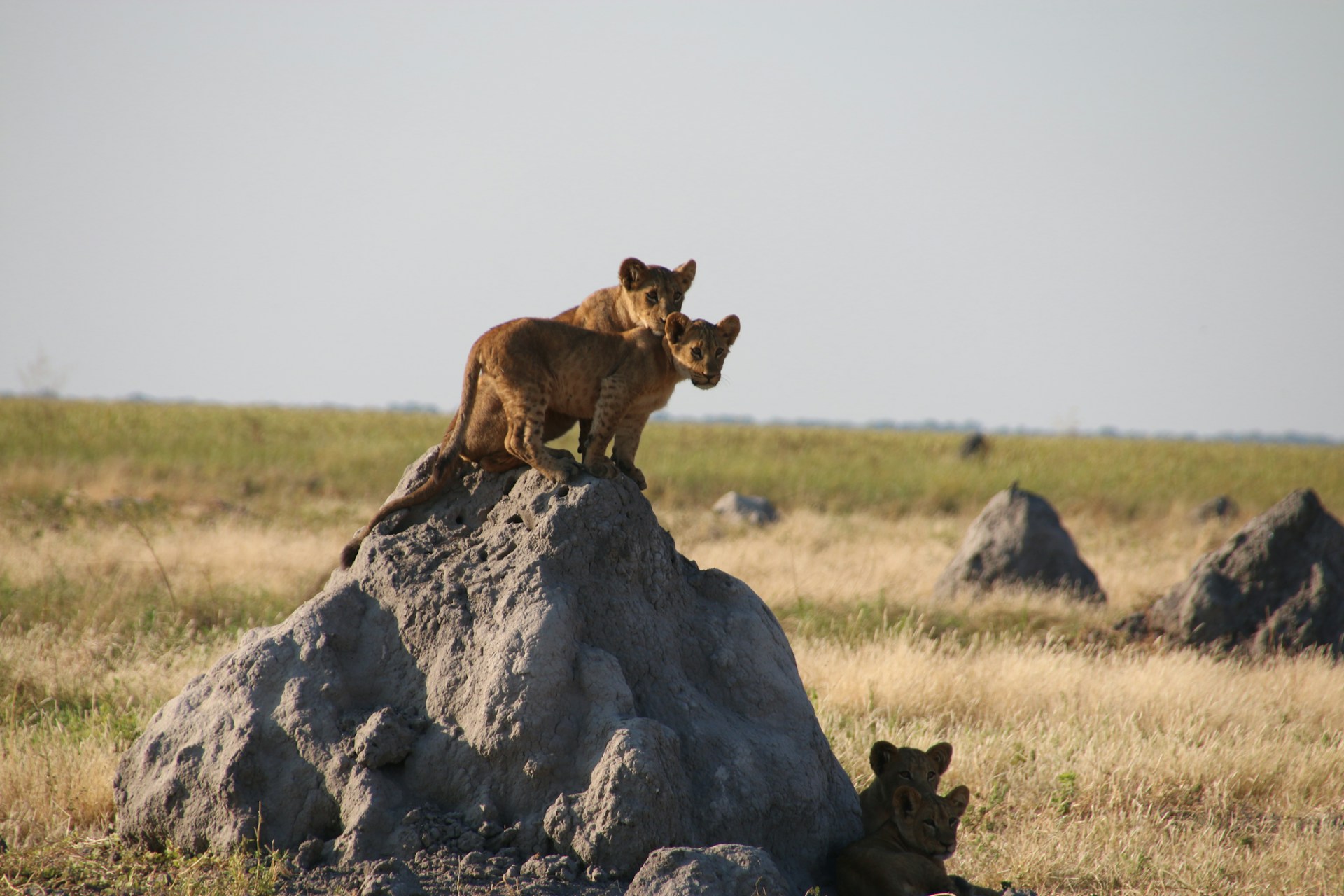Nxai Pan National Park is a captivating wilderness area located in northern Botswana, renowned for its vast salt pans, unique landscapes, and abundant wildlife. Here’s an overview of Nxai Pan and what makes it special:
Key Features
1. Nxai Pan: The park is named after the Nxai Pan, a large salt pan that dominates the landscape. The pan is a remnant of an ancient lake that once covered the area and provides a striking contrast to the surrounding grasslands and acacia woodlands. During the rainy season, the pan transforms into a shallow lake, attracting migratory birds and wildlife.
2. Wildlife: Despite the harsh and arid environment, Nxai Pan National Park supports a diverse array of wildlife. Commonly sighted species include elephants, zebras, giraffes, wildebeests, springboks, and various predators such as lions and cheetahs. The park is particularly renowned for its large herds of zebras, which migrate to the area during the dry season.
3. Baines Baobabs: One of the park’s most iconic attractions is the Baines Baobabs, a group of ancient baobab trees immortalized in paintings by the 19th-century explorer Thomas Baines. These towering trees stand sentinel on a grassy plain and provide a stunning backdrop for wildlife sightings and photographic opportunities.
4. Birdwatching: Nxai Pan National Park is a paradise for bird enthusiasts, with over 200 bird species recorded in the area. During the wet season, the pan and surrounding wetlands attract a multitude of waterbirds, including flamingos, pelicans, herons, and ducks. Birdwatching in Nxai Pan offers a unique opportunity to observe both resident and migratory species in a pristine natural setting.
Best Time to Visit
The best time to visit Nxai Pan National Park largely depends on your interests and what you hope to experience:
– Dry Season (April to October): The dry season is the most popular time to visit as wildlife congregates around the remaining water sources, making for excellent game viewing opportunities. The cooler temperatures also make outdoor activities more comfortable, and the dry conditions allow for easy access to the salt pan and other attractions.
– Wet Season (November to March): The wet season brings lush greenery to Nxai Pan, as the grasslands burst into life and the pan fills with water. This period is ideal for birdwatching, as migratory birds flock to the area, and the pan becomes a haven for waterbirds. However, access to certain parts of the park may be restricted due to flooding.
Overall, Nxai Pan National Park offers a unique and unforgettable safari experience, with its stunning landscapes, diverse wildlife, and rich cultural heritage captivating visitors year-round. Whether you visit during the dry season for optimal game viewing or the wet season for birdwatching and photographic opportunities, Nxai Pan promises an adventure like no other.





